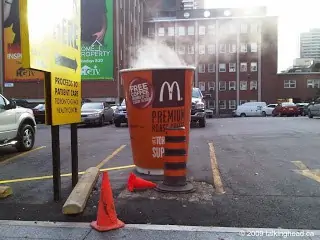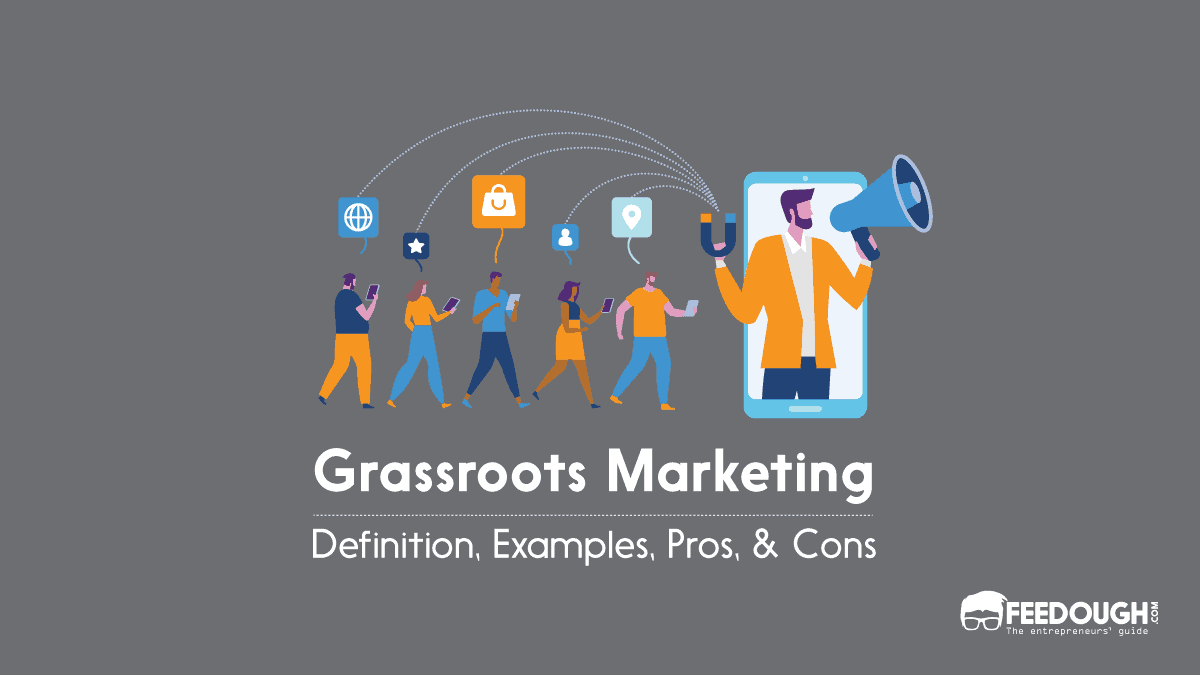In 2013, the Canadian budget airline WestJet surveyed passengers using interactive life-like screens, which depicted Santa dressed in the airline’s colours, to find out what they would like as Christmas presents. The airline employees kept taking notes of all their answers behind the scenes and then rushed for mad dash shopping of the respondents’ presents so that they could wrap and label them while the plane was airborne. The passengers’ astonished and thrilled emotions, along with the pleasure and delight reflected on the faces of the employees made for a fantastic video that went viral all over the internet and became known as the “Christmas Miracle”.
This grassroots marketing move of the airline set it apart and was very well in line with its idea of never losing sight of the caring WestJet touch. Grassroots marketing is one of the most effective and economical marketing strategies which most companies are inclining towards to spread product awareness these days.
Let us unravel the various aspects of grassroots marketing and how it can be fruitful and look at some innovative examples of the same.
What Is Grassroots Marketing?
Grassroots marketing is a marketing strategy that attempts to target a highly niche audience to make them propagate the brand message organically to a larger audience and thus, amplify the brand’s visibility in the marketplace.
Instead of reaching out to a larger segment of the consumer population, marketers try persuading that niche audience to spread the word and advocate their products or services amongst their peers.
It is akin to viral promotion of products and services by inspiring the audience to share it with others. The idea is that if a brand is looking to raise brand awareness from the ground up, it should start from the ‘grassroots’.
Grassroots Marketing Examples
Now that we have delved into what grassroots marketing is, looking at a couple of creative examples would give us a better insight and deeper understanding of the same.
UNICEF: Likes Don’t Save Lives
The early 2010s saw social media users obsess over increasing their Facebook likes and engagement. This even made them use causes and play with people’s emotions as they used pictures and videos of underprivileged humans, especially children.
Even though UNICEF appreciated the platform for creating a stage for awareness, it was against using this technique to gain more likes. Hence, it came up with Likes Don’t Save Lives campaign that gave a clear message that to save a life, one needs money, not likes.
ALS Ice Bucket Challenge
The challenge was to make a video pouring a bucket of ice water on people’s heads, either self-administered or by some other person and then challenge someone else to do the same. People were supposed to donate money to the ALS association if they participated in the challenge. This unique concept went viral in 2014 and initiated a chain reaction that helped spread awareness about the disease ALS and encouraged donations to research on the same. The idea was to inspire people to take action and support a cause from the ground up, which eventually grew to a nationwide campaign that grabbed everyone’s attention.
Dove Real Beauty Campaign
In the Dove Real Beauty Campaign, Dove got a forensic artist to draw women the way they picturised themselves and in a way some other stranger did. This powerful video started a movement and inspired so many women to believe in themselves and see their real beauty. It forced people to think about the deep rooted social conditioning which defines ‘ideal beauty standards’ for women.
Advantages Of grassroots marketing
Grassroots marketing moves can be advantageous for a company majorly because of the following reasons:
- Cost-efficient: The amount of money that one has to spend on a marketing campaign has nothing to do with the marketing weapon’s efficiency. Since the targeted audience is highly niche, grassroots efforts lead to significantly low expenditures.
- Direct interaction with the audience: If a brand directly appeals to the audience interactively and puts forth its perspective, it makes an impressive mark on the consumers and portrays itself as being a socially proactive brand.
- Garnering customer trust: In today’s era of advertisements overload, it isn’t easy to figure out whom to trust and whom not to. Hence, people put more trust in recommendations from known ones. Grassroots marketing uses this referral marketing strategy to gain consumer trust.
- Increasing local reach: Grassroots marketing drives can help businesses impact society, especially the local communities. For instance, some community events or collaborations with NGOs can draw people’s attention towards both the brand and the cause.
Disadvantages Of Grassroots Marketing
Even though it comes with its own set of advantages, grassroots marketing has its cons too, which may stop a business from choosing it as a marketing strategy.
- Time intensive: Grassroots marketing relies on word-of-mouth. Hence, it takes its own time. A grassroots marketing campaign is probably not a good idea if a brand wants to reach a large group quickly.
- No full control: A brand doesn’t usually control the information that spreads due to a grassroots marketing campaign. This could turn out to be a blunder for the company if people misunderstand the message.
- Unpredictable: Even though a grassroots marketing campaign is a well-calculated strategy, predicting its success or failure isn’t always possible as it heavily depends on human emotions, timings, and other external factors.
Strategies or ideas to optimise Grassroots Marketing
Incorporating the following strategies can help brands optimise their grassroots marketing:
- Offer product samples: Brands can showcase their products in exhibitions or trade fairs or any other events of the kind to increase product awareness. For instance, they can give some sample products to potential clients or make them taste something special on the menu in case of a restaurant.
- Sponsorship prizes: Giving some unique sponsorship prizes to the winners of a contest can make a mark on them and encourage them to spread word about the products and services of the brand.
- Pitch a viral video series: If the people like the content and share it with others, it can help create a lot of buzz and increase popularity in the market.
- Take advantage of social media: The brand should be actively present everywhere it can find potential customers so that it does not miss out on any possible opportunity to increase its reach.
- Collaborations: Partnering with different businesses and influencers helps reach a wide audience and can open doors to new brand opportunities.
- Support a good cause: Getting involved in charities or supporting good causes can appeal to the people because it helps the brand connect with people’s emotional sentiments.
- Moment marketing: Nowadays, moment centric content buckets receive the most appreciation because people find it easier to relate to them. Thus, catching current trends helps brands express how proactive they are.
- Host events: Organising events like webinars, workshops or any other sessions spreads the word and increases awareness about a product or service.
- Interview blogs and story-telling: Story-telling and interview transcripts can help spread brand messages and make people connect with the brand better.
Difference between grassroots marketing and guerilla marketing
People often tend to confuse between the terms, grassroots marketing and guerilla marketing.
The key distinct feature between the two is that grassroots marketing moves aim to target a very niche audience and then consequently spread the word while guerilla marketing campaigns are aimed to reach as many people as possible. For instance, McDonald’s has made use of a lot of creative guerilla marketing campaigns which are not grassroots marketing examples because they do not target a specific audience.


Bottom-Line?
The growing inclination towards grassroots marketing is that these tactics help brands grow exponentially in a very short span of time. However, it is very essential to know which audience should be specifically targeted and what strategy should be used to make such an impression on that audience that they spread brand awareness to as large an audience as possible.
Go On, Tell Us What You Think!
Did we miss something? Come on! Tell us what you think about our article on grassroots marketing in the comments section.
An economics aficionado and a researcher at heart, Shrishti has also worked as a consultant to assist startups and NGOs in varied verticals. When not working, she is a passionate dancer and painter.









